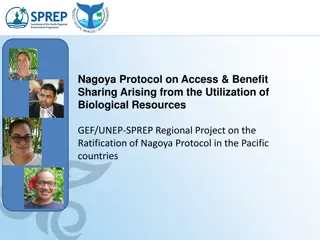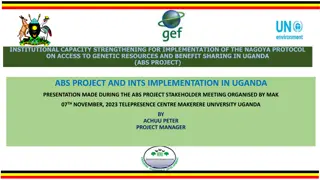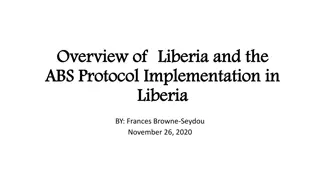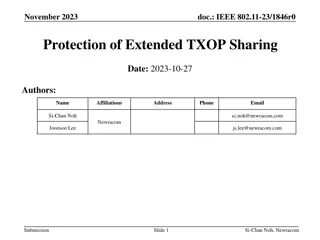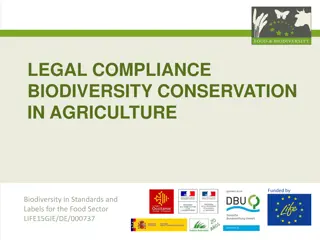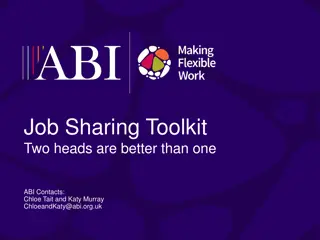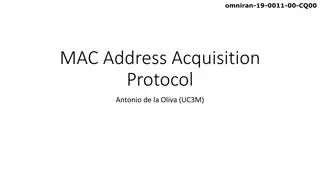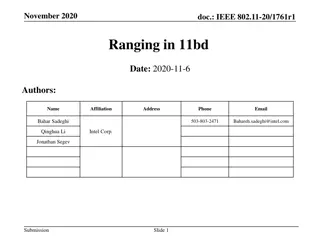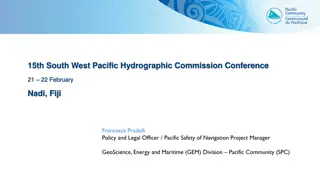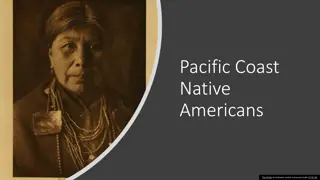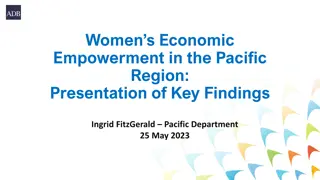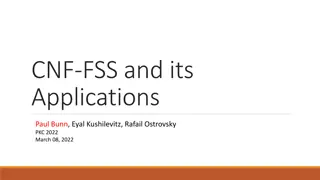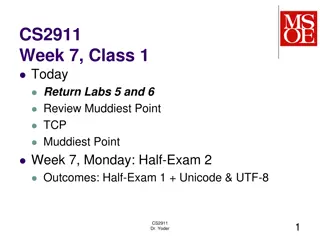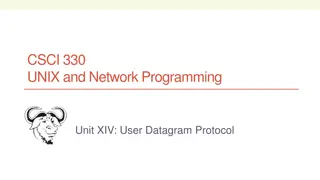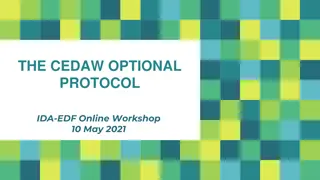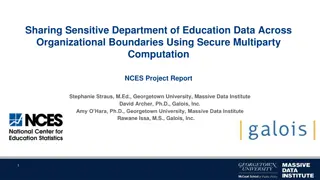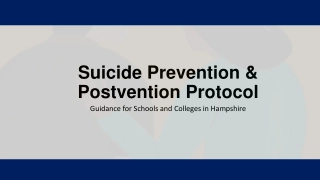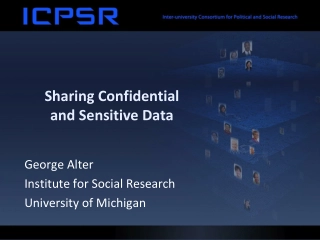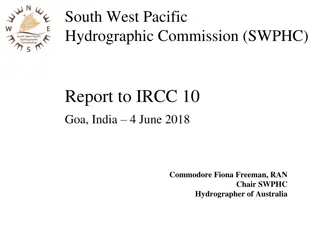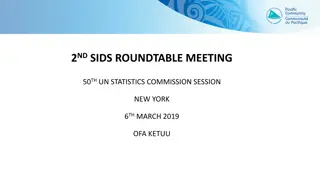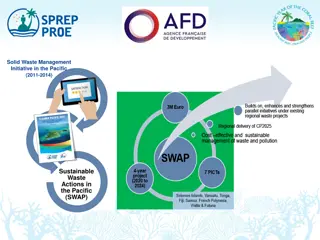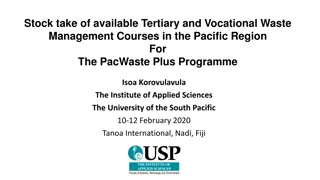Understanding the Nagoya Protocol on Access and Benefit Sharing in the Pacific
The Nagoya Protocol aims to drive conservation and sustainable use of biological resources in the Pacific by ensuring fair access and benefit sharing. It outlines core components such as access, benefit sharing, compliance, and traditional knowledge. Stakeholders include providers, users, national focal points, and competent national authorities, working together to maximize benefits for all involved parties while safeguarding biodiversity.
Download Presentation

Please find below an Image/Link to download the presentation.
The content on the website is provided AS IS for your information and personal use only. It may not be sold, licensed, or shared on other websites without obtaining consent from the author. Download presentation by click this link. If you encounter any issues during the download, it is possible that the publisher has removed the file from their server.
E N D
Presentation Transcript
Nagoya Protocol on Access and Benefit Sharing as a Means to Drive Conservation and Sustainable Use of Biological Resources in the Pacific. GEF/UN Environment-SPREP Regional Project on the Ratification of Nagoya Protocol in the Pacific countries Isabell Rasch Access & Benefit Sharing Technical & Finance Assistant isabellr@sprep.org/abs@sprep.org
Overview Background CBD Structure Nagoya Protocol Core Components Stakeholders Importance Samoa Sustainability & Conservation Way forward: GEF-UN Environment-SPREP Regional Project
Background A way in which genetic resources can be accessed while ensuring the benefits that arise from their utilization are shared amongst its users and providers. The ABS provisions of the Convention on Biological Diversity are set to: Ensure facilitation of physical access to genetic resources Certify that all benefits from their uses are equitably shared
The Nagoya Protocol: Core Components Access: recognizes the authority of states over their genetic resources & have the rights to determine access through Prior Inform Consent (PIC) Benefit sharing: sets out the sharing of benefits arising from the utilizing of these resources in the Mutually Agreed Terms (MAT) Compliance: certifies genetic resources are being used within jurisdiction & have been accessed through PIC with established MAT Traditional Knowledge: Addresses genetic resources established by indigenous local communities are to be accessed using consent given by local communities under agreed terms
Stakeholders Providers: States have sovereign rights over their GRs. ILC Land owners Users: Researchers, agricultural & pharmaceutical industries. National Focal Points Competent National Authorities
Importance Ensures methods of access for genetic resource maximizes benefits for users and providers as well as ecology and communities they are found in Users search for genetic resources to deliver benefits such as: scientific research for taxonomy, developing of products contributing to human well being such as pharmaceuticals Developing countries alleviate poverty through granting of access to genetic resources in exchange for monetary benefits. Revenue obtained from the access to genetic resources is directed to conservation activities. Benefit sharing seen as an incentive to promote conservation of flora and fauna
SAMOA High species diversity and endemism. 25% of the plant species are endemic with 136 species endangered. Became a party to the Nagoya Protocol of the CBD in 2014 Currently have a Access Permit System where bioprospecting exists without a benefit sharing component National Environment Sector Plan (NESP) 2017-2020 identifies activities related to ABS National Biodiversity Strategy & Action Plan Target 16 sets out policy framework and action plan for ABS Samoa received 29 permit requests from 2011 to 2015. Previously Samoa had ABS related cases with Homalanthus nutans (mamala) AGR Falealupo Covenant 1989 access community rainforest for biodiscovery purposes. Plant of interest used by traditional healers to treat acute viral infections.
Conservation & Sustainable Use of biological Resources Allows better understanding and development through taxonomic research The NP creates incentives to conserve biological diversity and the sustainable use of its components Contribution to conservation and sustainable use Global Multilateral benefit sharing mechanism Key for achieving 2 Sustainable Development Goals SDG 2: End hunger, achieve food security and improved nutrition & promote sustainable agriculture SDG 15: life on land.
Way forward: GEF-UN Environment-SPREP Regional Project on the Ratification of the Nagoya Protocol in the Pacific Objective: To support Pacific Island countries to ratify the Nagoya Protocol & to implement key measures to make the Protocol operational. Components Prepare baseline analysis for the identifying of common assets, issues & needs Assist countries to ratify the NP through supporting national authorities. Establish enabling environments for the implementation of basic provisions of the NP. Address regional coordination and technical support.


